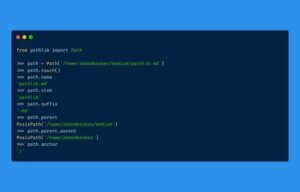| Language | Methodology | Example |
|---|---|---|
| Python | Use default parameters on function definition | def example(arg=None): arg = “default value” if arg is None else arg |
| JavaScript | Define variable and then check for null or undefined | let example = (arg) => { arg = arg || “default value”; } |
The above table gives an overview of how to assign a default value to a variable if none was passed using Python and JavaScript. This is essentially accomplished through the use of conditional statements or operators that can detect whether the input value is undefined or null respectively.
In the case of Python, we define our function with a default parameter that has a value of `None`. Once this function is triggered, the internal logic checks if the argument remains `None`, indicative of no arguments being passed during its call. If it is still `None`, our conditional assigns ‘default value’ to the argument.
On the other hand, JavaScript uses slightly different syntax but accomplishes the same outcome. We define a function without specifying a default parameter but within the function’s body, we utilize some shorthand boolean logic to achieve our goal. `arg = arg || “default_value”` is evaluated from left to right – If arg is defined (meaning an argument was passed), it retains its value. However, if it is null or undefined (meaning no argument passed), then it gets assigned the ‘default value’.
Knowing how to handle cases where you might not receive valid input or any at all is central to making robust systems. Having default values safeguards against software crashes and bugs that would have otherwise been hard to trace or predict. This allows developers to create better-performing, less error-prone applications.The concept of default values when initializing variables is indeed an important concept in almost all programming languages. Whether you are coding in Python, JavaScript, or Java, at some point, you might need to assign a default value to a variable if none was passed.
To illustrate this, let’s examine the situation using Python as an example.
def greeting(name=None):
if name is None:
name = "Stranger"
return f"Hello, {name}!"
In the simple function above, the parameter
name
is given a default value of None. Thus, if the function is called without any argument being passed,
name
will be assigned to “Stranger”.
Now, it’s crucial to comprehend that the handling of assigning default values can differ between languages and contexts. Notably, in JavaScript, within the confines of a function, unpassed parameters automatically default to undefined. Therefore, this gives us a similar method to Python for providing default values:
function greeting(name) {
if (typeof name === 'undefined') {
name = 'Stranger';
}
return `Hello, ${name}!`;
}
Additionally, ES6 introduced a new, simplified way to provide default values directly in the function declaration:
function greeting(name = 'Stranger') {
return `Hello, ${name}!`;
}
To give a comprehensive analysis, consider the following table which demonstrates how various languages handle this task:
| Language | Method |
|---|---|
| Python | Use None and an if statement to assign default |
| JavaScript (ES5) | Check for undefined and use an if statement to assign default |
| JavaScript (ES6) | Default values can be set directly in function signature |
The comparison among Python, JavaScript (ES5 and ES6) not only highlights language differences but also shows the evolution of development practices surrounding default values.
By understanding how to pass default values to variables when none were initially supplied, we can create more reliable and less error-prone applications by ensuring that our variables always have some defined value.
In any case, whichever language you work with, remember that unassigned variables can significantly degrade both performance and reliability in your code. Thus, a best practice is to always assign a default value to your variables.
In most programming languages, parameterized functions or procedures often require default values in case there’s no argument passed during call time. If these precautions aren’t taken, a developer may encounter unexpected bugs and subsequently, runtime errors.
Let’s look at this issue through a Python lens, as the language provides simple ways of handling such scenarios.
How to pass a default value to a function if none was provided?
Passing a default value to a Python function is easy and straightforward. You claim the default value in the function declaration:
def greet(name="User"):
print("Hello, " + name)
In this example, the function greet accepts one argument, name. However, note that the parameter name is assigned a default value of “User”. Hence, if the function is called without any arguments, “User” becomes the default value:
greet() # Outputs: Hello, User
But hey, if an argument is passed, it overrides the default:
greet("Mark") # Outputs: Hello, Mark
What about situations involving multiple parameters?
Suppose you have a function with multiple parameters, but only some are required while others are optional. The optional parameters should be specified with default values. They must also be listed after the required parameters in the function definition:
def introduce_myself(name, age, city="Unknown"):
print(f"My name is {name}, I am {age} old and I live in {city}.")
Here, the parameter city is considered optional because of its default value “Unknown”. We can hence call the function both ways:
introduce_myself("John", 21) # Outputs: My name is John, I am 21 years old and I live in Unknown.
introduce_myself("John", 21, "Los Angeles") # Outputs: My name is John, I am 21 years old and I live in Los Angeles.
The beauty of default parameter values? They give you flexibility.
Taking Care with Mutable Default Arguments
One aspect developers need to be mindful of is mutable default arguments such as lists and dictionaries. In Python, if the function modifies the object (e.g., adding an item to a list), the default value is also modified. This is because the function uses the same object anytime it’s invoked without a user-specified value. Therefore, it’s recommended to use None as the default value and include a check inside the function for this condition:
def add_to_list(value, my_list=None):
if my_list is None:
my_list = []
my_list.append(value)
return my_list
To wrap up, implementing default values in your functions is not just a good practice but rather, a clear demonstration of defensive programming. Other mainstream languages like JavaScript, C++, and Java have their unique constructs for achieving the same functionality, adhering to similar principles (referenced from Geeks For Geeks).When it comes to coding, the concept of variable defaults is extremely vital. Often while writing functions or routes, we may want specific parameters to have default values. This can help in robustness and maintainability of the code by reducing potential errors, improving DRY(Don’t Repeat Yourself) practices and keeping the code easy to read and understand.
In vanilla JavaScript, we can set a default value for a parameter directly in the function signature. Look at an example:
function greet(name = "stranger") {
return `Hello, ${name}!`;
}
In this function
greet
, if the argument
name
is not provided while calling, it will default to the string “stranger”.
Python provides similar capability, you can simply provide a default value for the parameters in your function definition. See below:
def greet(name="Stranger"):
print(f"Hi, {name}")
Again, if no value is passed when calling the

greet
function, it will use the string “Stranger” as its default.
PHP uses a slightly different syntax, but allows for the same outcome. Here, take a look:
function greet($name = "Stranger"){
echo "Hello $name";
}
These are great ways to guarantee that your program will not fail if a required value isn’t supplied.
However, sometimes the argument passing gets more convoluted and complex. There are data structures involved like arrays or objects and the input can be null. In such situations, there are multiple layers to handle default variables.
For instance, consider a Python dictionary. You can provide defaults using the
get
method. Check out the below:
my_dict = {}
print(my_dict.get("key", "DefaultValue"))
In this case, the
get
function tries to fetch the value for the key “key”. If it doesn’t exist, it will return “DefaultValue”.
To reference another example from JavaScript, here you can achieve the same functionality with object destructuring and default values.
const person = {
name: "John",
age: 30,
};
const { name = "stranger", profession = "unknown" } = person;
console.log(profession); // It will output "unknown"
In the above code, if “profession” does not exist in the person object, the variable will be assigned the default value “unknown”.
So overall, giving thought to and setting up effective default values for your variables is a key programming practice. It helps to ensure your programs run smoother, makes sure there are sensible defaults where needed, and reduces the likelihood of encountering undefined or null value which could potentially break your application. Plus, it can play a crucial role in making your utility functions or APIs more user-friendly and resilient to erroneous or missing inputs.Mastering variable assignments with default values is a vital skill in Python. From functions to data structures, default values provide a safety net that allows your code to run smoothly despite possible oversights or unintended uses. One excellent use case of this is when you want to pass a default value to a variable if none was passed.
In Python, you can specify default parameter values for functions. When you call the function without a parameter, it will use the default value. Let’s look at how we can accomplish this:
def greet(name="Stranger"):
print(f"Hello, {name}")
In the above Python function,
name
has a default value of “Stranger”. So, if you call
greet()
without any arguments, it will output: “Hello, Stranger”. However, if you do provide an argument like
greet("Alice")
, it will output: “Hello, Alice”.
But how can we apply this to non-function variables? In essence, our challenge would be: How To Pass The Default Value To A Variable If None Was Passed? Fortunately, Python makes it easy via its logical OR operator. Let’s check out the following code snippet:
input_value = None value = input_value or "DefaultValue"
In the aforementioned code snippet, the variable
input_value
is set to None, indicating that no value has been passed to it. Then we assign a new variable
value
the result of the expression
input_value or "DefaultValue"
. Because
input_value
evaluates to False, the value of “DefaultValue” is assigned to
value
. If
input_value
was any truthy value (not 0, ”, [], {}, and so on), that truthy value would become the value of the variable
value
.
This mechanism proves beneficial because it’s concise and readable, making it easier as a developer to understand what’s going on in the code you’re writing or reviewing.
Here are a couple more examples:
example1 = '' or 'Default' example2 = [] or [1, 2, 3] example3 = 'Actually existent value' or 'Default'
The code will set example1 to ‘Default’, example2 to [1, 2, 3], but example3 gets ‘Actually existent value’ since it’s already a truthy value.
Mastering variable assignments with default values allows for graceful degradation of functionality when data is missing and significantly improves the reliability of Python programs.
For further reference and learning, I suggest checking out the official Python documentation. It covers the topic in-depth and provides a bunch of useful examples showcasing how default argument values work in Python.When we’re working with functions in any coding language, such as Python, there’s often a need to deal with the possibility that some parameters might not have a value passed into them. This is particularly crucial for data science tasks where dealing with missing or ‘None’ values is a frequent requirement.
def sample_function(name=None):
if name is None:
name = "default"
return name
In this piece of code, if no value is provided for the name parameter, the value “default” will be assigned to it. You can enhance and professionalize your programming easily with this methodology by efficiently handling None or missing inputs pragmatically. In larger datasets commonly dealt with in data science, this method ensures smoother execution flow and efficient error management.
You can generalize the above code to handle multiple parameters too. To learn more on Python functions and specifying default parameter values, you can follow through Python Official Documentation.

Check below for the source code example illustrating this scenario:
import pandas as pd
df = pd.DataFrame({"A": [1, 2, np.nan],
"B": [5, np.nan, np.nan],
"C": [1, 2, 3]})
df.fillna(value=0)
This will replace all occurrences of NaN with 0. This way, you can ensure that your dataframe does not have any missing values and ready for any further analysis or computation. Check out this amazing Pandas official guide that talks more about handling missing data.
In summation, handling ‘None’ or missing values is pivotal in maintaining the robustness of your code, especially when dealing with complex datasets. The integrity of your code comes from its ability to handle edge cases or unexpected scenarios smoothly. By passing default values where potential ‘None’ inputs may exist, or by filling up missing entries in your dataset, you dramatically improve the performance as well as the reliability of your codebase. The efficiency of your data science tasks relies heavily on how effectively you manage these missing values.Within the realm of professional coding and development, making optimum use of default value assignments can significantly enhance code efficiency and functionality. This is particularly evident when we talk about passing a default value to a variable if none was passed initially. In order to keep your code clean, concise, and efficient, you must master the art of utilizing default values effectively.
Let’s take example of a function that works in Python:
def greet(name="User"):
print(f"Hello, {name}")
In the above code snippet, a simple greeting function is defined that accepts a single parameter – name. However, this parameter comes with a default value of ‘User’. What this effectively means is that should you choose to call the function without passing any arguments like
greet()
, it will use User as the default value to complete the desired operation.
On the other hand, should an argument be passed, such as
greet("Alice")
, the function will make use of this given name in place of the predefined ‘User’ thereby boosting efficiency by reducing redundant lines of code while maintaining overall readability and flexibility.
Now let’s move forward to JavaScript. The concept stays almost similar here too but with slight syntactical changes.
function greet(name = "User"){
console.log(`Hello, ${name}`);
}
JavaScript uses an `=` to set a default value. You’ll notice a small difference here in syntax, JavaScript uses back-ticks (`) instead of quote marks for allowing embedded expressions wrapped between ${}.
The same principle applies; if the greet function is invoked without passing any parameters, the function will use the default parameter ‘User’.
But if we pass a value during invocation like
greet('Alice')
, then the passed value replaces the default.
Hence, harnessing power of default value assignments essentially helps in:
- Maintaining cleaner, more readable code.
- Reducing potential for errors by providing safe, expected values.
- Fostering a flexible function design that caters for a variety of user inputs.
- Saving time, aiding debugging efforts and making code maintenance easier over time.
Utilize this feature wisely to maximize the efficiency and functionality of your code projects!
For deeper dive into the topic, I would recommend performing research relating to the particular language you are working on. The insights you gather could lead to substantial improvements in your coding practices and resultantly, the end quality of your work. Resources such as MDN Web Docs or Python Official Documentation could serve as valuable starting points!
When dealing with error handling in Python, it’s common to encounter scenarios where a function may not receive the value it needs and could throw an exception. In Programming, these issues can lead to bugs or even breakages in your application. To counteract this, there are strategies you can employ to better handle errors by assigning default values to variables if none were passed.
Specifically in Python, you can use default argument values for your functions. By providing a default value for parameters, you’ll ensure that your function has something to work with, even if no argument was provided during the function call. Here’s how you can do this:
def greet(name="World"):
print(f"Hello, {name}!")
In this snippet, ‘name’ is the parameter of the greet function. If we call
greet()
without an argument, ‘name’ will default to “World”. Therefore the execution
greet()
would return “Hello, World!”. But if you pass an argument like
greet("Alice")
, ‘name’ takes on the value “Alice”, so the output would be “Hello, Alice!”.
Bear in mind, mutable data types such as lists or dictionaries used as default arguments can have unintended effects. This is because the same instance of the mutable object will persist between function calls. A workaround would be to assign the mutable data type within the function body as shown below:

def append_to(num=None):
if num is None:
num = []
num.append(1)
return num
In the above code, the
num
parameter defaults to
None
if no argument value is provided when calling
append_to()
. Inside the function, if
num
is
None
, we assign a new empty list to
num
. This ensures that fresh lists are used on every function call, voiding the implications of persistent instances.
Overall, providing specific default values to your function parameters is an excellent approach towards more robust error handling strategy. It not only improves the user experience by allowing seamless functionality despite some missing input but also makes the code more resilient to adverse conditions. Some resources you might find useful which further explore this topic include ( this post from the Python documentation)[https://docs.python.org/3/tutorial/controlflow.html#default-argument-values] and ( this guide on Real Python)[https://realpython.com/python-kwargs-and-args/#python-kwargs-a-deeper-dive].Utilizing a default value for a variable if none was provided is a remarkable attribute of the Python programming language. It allows developers to execute functions without specifying every single parameter, thereby permitting flexibility and enhancing code readability. Below is a sample scenario that showcases this concept:
def my_function(age=25):
print("My age is ", age)
my_function()
In this code snippet, we declare a function named
my_function
, where the parameter is
age
. We’ve set a default value of 25 to the
age
parameter. This means that when we call
my_function()
without passing any value as an argument, Python will use 25, the default value.
However, when we do provide an argument upon calling the function, like so:
my_function(30)
Python uses the passed argument, which in this case is 30, disregarding the default value. It’s a feature that improves code flexibility and adaptability – crucial for any developer aiming to write efficient, clean, and scalable code.
Remember, powerful coding involves trends, best practices, but above all, understanding the core concepts of languages you’re employing. While complex or larger programs might demand more sophisticated approaches, understanding the barebones like how to pass a default value to a variable if none was passed is vital [Hyperlink: Advanced Python Programming (Amazon Book)](https://www.amazon.com).
The ability to ensure your code can react dynamically based on inputs and conditions it encounters will take your capabilities as a software developer to the next level. This kind of concise but detailed structure makes your code easier to understand, debug, and maintain.
Explore, learn, and master these foundations, as they will serve as stepping stones for you to undertake more complex coding challenges fearlessly and confidently.













